Dual SSR by celduc allows to control two loads with a unique or separated input, in a single package. Many options are available: both vertical and horizontal connections, different input connectors & several output protections. Dual SSR can cover all the market needs!
A Dual SSR of the SOB series are two working single phase Solid State Relays into one standard 45mm package.

The two output sections of a « 2 controls » SOB are controlled by individual inputs. This allows each channel to operate independently each other.
Dual Solid State Relays offer several advantages over standard single-phase “hockey puck” SSRs. As the package size of a dual SSR is identical to a standard single-phase SSR. So the indisputable advantage is space savings.
All your applications that use more than one SSR can potentially replace two single SSRs with one dual SSR.
Moreover, using a two-phase Solid State Relay reduces assembly time as only one relay package must be mounted to provide two SSR functions.
A « dual » solid state relay operates exactly in the same way as a single-phase SSR.
celduc® is offering « 1 control » SOB with common inputs :
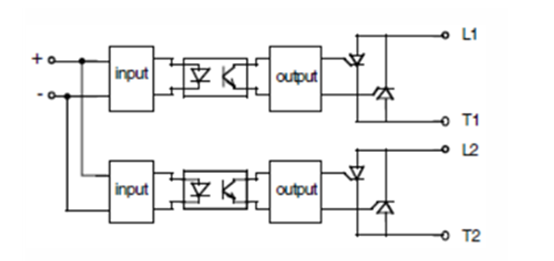
and our « 2 controls » SOB have two individual inputs, which each controls its own individual output.
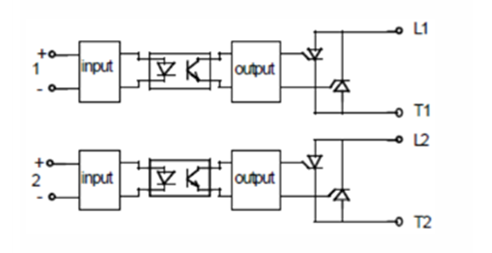
The output connections can either be configured “vertically” or “horizontally”, depending on the version. Your choice will be based on your wiring configuration inside the panel.
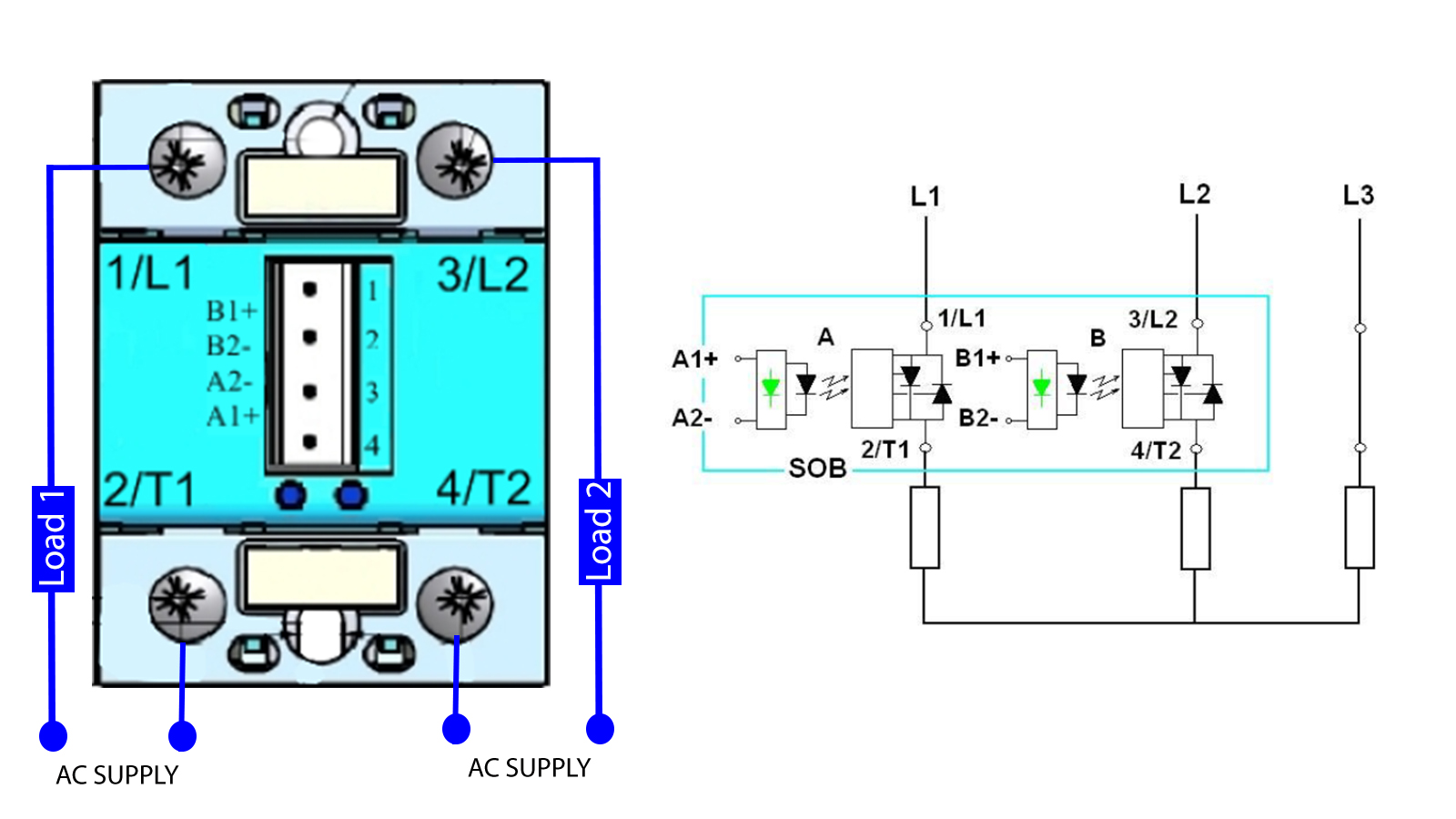
Our SOB range is available with a voltage range of 12-600Vrms and for current ratings from 2 x 12A up to 2 x 75A (with high I²t values). Of course, « dual » SSR must be mounted on a suitable heatsink that can manage the full power dissipation of both outputs combined.
The input circuit of our SOB range is the same as our single-phase relay.
There are four input terminal configurations available :
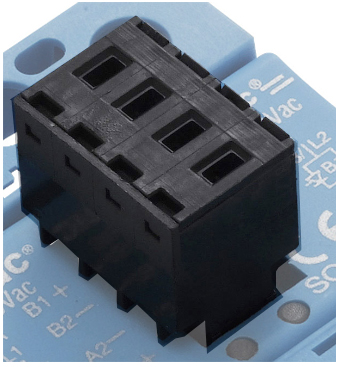
– input terminal configurations nr 1 : is the standard four-pin connector seen on many industry-standard dual SSRs. « 1 control » SOB has a two-pin connector.
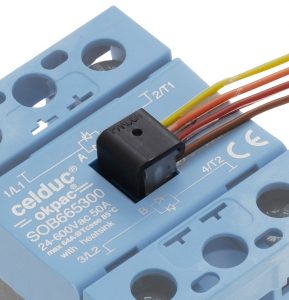
– input terminal configurations nr 2 : is double input connector CE100F ITWPANCON type or similar
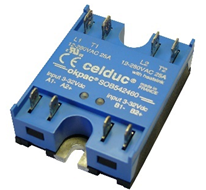
– input terminal configurations nr 3 : Faston terminals
Dual solid-state relays are found in a wide variety of applications, including professional cooking ovens, Plastics and Packaging Machinery, Lighting Systems, Medical Equipment, …
Resistive Loads (AC-51) is the most common application. « Dual » SSRs are used for controlling the temperature inside an oven or injection molding machine. Each output can control an individual heating element.
However, lighting/Infrared heating control are also a popular applications for Dual SSRs, where random turn-on versions are used. This is the case with our SOB7 range (Instantaneous switching SSR with Integrated over-voltage protection (VDR). Typical Application is IR heating control using phase angle control for paint dryers.
Dual solid-state relays are also perfectly adapted to three-phase applications with breaking of two phases only. It could be in a delta configuration, or in a star configuration without a neutral connection (for balanced low voltage loads). In such applications, two of the three phases are switched by the SSR, the third phase is wired directly to the load. This is common in many resistive heating and motor control applications. One advantage is (again) space savings, as a two-phase SSR is smaller than a standard three-phase SSR. But the biggest advantage of using a two-phase SSR to switch a three-phase load is reduced power dissipation. A Dual SSR dissipates 33% less power than a three-phase SSR in a given application since only two outputs are conducting load current. This helps to reduce the size of the heatsink, which reduces total cost and, once again, panel space.
To summarize, Dual SSRs can be used in lots of applications and are possible solutions to three-phase load control when switching two of the three phases is acceptable.
12 – 280Vrms, 2 x 12 or 25A
Fast-on terminals with 4,8mm for the input and 6,3mm for the output , optional with TVS over-voltage protection
Typical application: Boiler or steam generator in coffee machines
SOB6 :
12 – 600Vrms
1 x 12 up to 2 x 75A
Flat cable connector for the input and screws for the output
Optional with TVS over-voltage protection
Typical application: applications where the SSR’s are connected directly with a PCB temperature regulators with many channels, for example in prof. kitchen ovens
24 – 510Vrms, 2 x 35, 50 or 75A(UL 50A)
Instantaneous switching SSR
Integrated over-voltage protection (VDR) for inductive loads or for phase angle control
Typ. Application:
IR heating control using phase angle control. In this case for paint dryers
24 – 510Vrms, 2 x 35, 50 or 75A
Optional TVS over-voltage protection
For slightly inductive loads, such as motors
Typ. applications:
Single phase motor with phase-shift capacitor
Two phase switching of a three phase motor
SOB9 :
12-600Vrms, 2 x 25, 35, 50 or 75A
Designed for resistive loads, industrial input connector with a lot a variations (e.g. screw, spring, crimp)
Optional TVS over-voltage protection
Typ. application: plastic machines